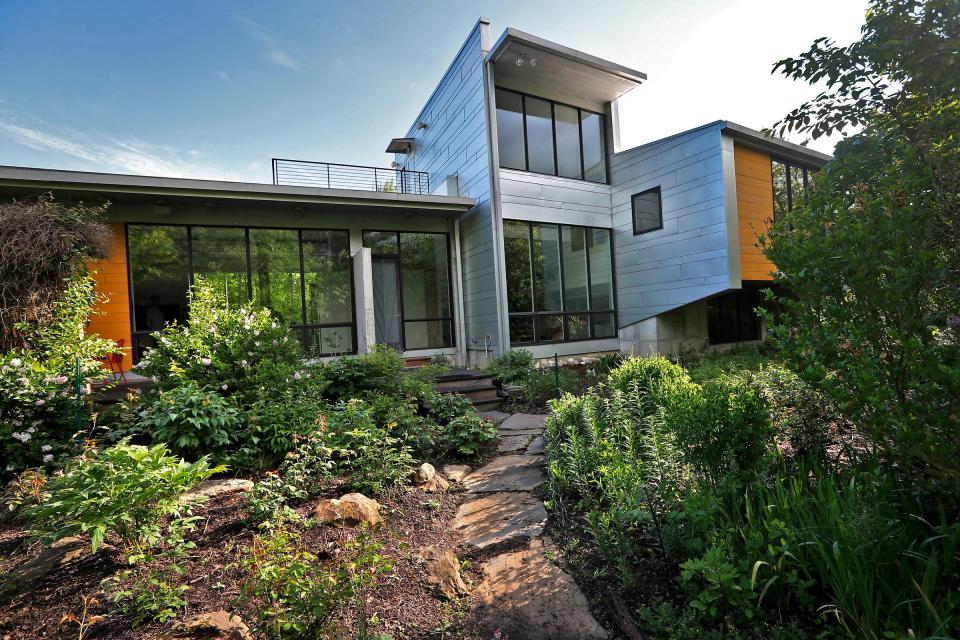Scrub Hub: Will climate change affect hardiness zones for what to plant and when in Indiana?
Climate change has and will continue to shift weather patterns in Indiana, bringing changes in precipitation and leaving some Hoosier gardeners puzzled about what to expect in the future.
We’ve covered how some of those changes will affect what trees can be planted, but this week we’re going to focus on garden beds.
Scrub Hub: : Your lungs can get a 'sunburn' from heat and pollution, making breathing hard
Our newest edition of Scrub Hub comes to you thanks to a reader submitted question from Michele Mattice. Michele asks:
“Will climate change affect the USDA Hardiness Zones for gardening? In other words, will the types of plants that are considered either annual or perennial in central Indiana be altered because of climate change?”
We spoke with some experts in the state to help Michele and other Hoosier gardeners plan for a shifting climate.
Short Answer: Climate change shifts growing zones
The short and sweet answer is: Yes, the hardiness zones are shifting due to climate change and Indiana has already experienced a shift. The USDA describes its zoned map as "the standard by which gardeners and growers can determine which plants are most likely to thrive at a location."
Scott Robeson, geology professor at Indiana University, said the state already has experienced a half zone shift from 6a to 6b. These shifts are calculated using the coldest temperature experienced on a 30-year average, and climate change is continuing to shift those extreme temperatures. By mid-century, experts are predicting yet another shift in USDA hardiness zones.
“Essentially northern Indiana will be like what southern Indiana is now,” Robeson said. “Conditions in Evansville or new Albany are a good model for what South Bend or Fort Wayne will be like in the future.”

Addressing the second half of Michele’s questions, Hans Schmitz, an agronomist at Purdue University, said it’s definitely possible for annual species to change to perennials.
“Annuals could begin to overwinter and become perennial,” Schmitz said. “That’s the number one thing we’re talking about as we warm and switch zones.”
But what kind of plants matter when considering these shifting zones?
“In my experience, plant hardiness zones are mostly for ornamental plants, garden plants and food plants that are harvested in that season anyway,” Schmitz said. “Whether they will overwinter or not is as important as somebody that’s got elephant ear plants that have to bring in.”
Scrub Hub: Hoosiers may not be able to plant the same trees they used to
Long answer: Experience and your microclimate matter
As Hoosiers experience these broader shifts in zones due to climate change, it’s important to also pay attention to microclimates and rely on your gardening experience.
In areas with diverse geography, where hilly areas cast shadows on valleys, the changing hardiness zones might not mean Hoosiers have to shift the ornamentals in their lawns.
“Plant hardiness zones are great if you’re moving to new area and want an idea of what plant would grow or be perennial,” Schmitz said. “But 5-10 years’ experience growing in specific area and understanding the microclimate where you are allows you to rely less on hardiness zones.”
On hills and in valleys, cold air drainage can have big effects in a small area.
You can get late frosts in a valley and temps several degrees cooler than they are up on a hillside.
“These climate stations we use for all this (hardiness zone) analysis tend to be in open areas and are representative of the region rather than those microclimates,” Robeson said.
The Scrub Hub: Your questions. Our answers.
Do you have questions about the environment? IndyStar environmental reporters Sarah Bowman and London Gibson want to hear from you.
These microclimates may not even be as obvious as a hill.
“Even a south facing part of house versus the north facing is different,” Robeson said. “People take advantage of that.”
As these shifts occur in Indiana, garden maintenance might change, too.
The main thing to think about, Schmitz said, is Hoosiers getting more growing season length. As we experience earlier late freezes in the spring and later last freezes in the fall, more weeding will have to be done and we’ll have to shift the idea of what plants to grow.
“Also, if you’re used to planting by old adages as far as saying about when to plant potatoes relative to Easter, that’s all going out the window,” Schmitz said.
There will be earlier planting opportunities, but with those comes the risk of increasing variability of temperatures thanks to climate change.
“We know that, at least for the near future, the last freezes are going to be earlier but potential for a freeze is becoming more variable,” Schmitz said. “At least in near future, it’s a little more chaotic that it used to be.”
Karl Schneider is an IndyStar environment reporter. You can reach him at karl.schneider@indystar.com. Follow him on Twitter @karlstartswithk
IndyStar's environmental reporting project is made possible through the generous support of the nonprofit Nina Mason Pulliam Charitable Trust.
This article originally appeared on Indianapolis Star: Scrub Hub: Will climate change shift USDA hardiness zones?

